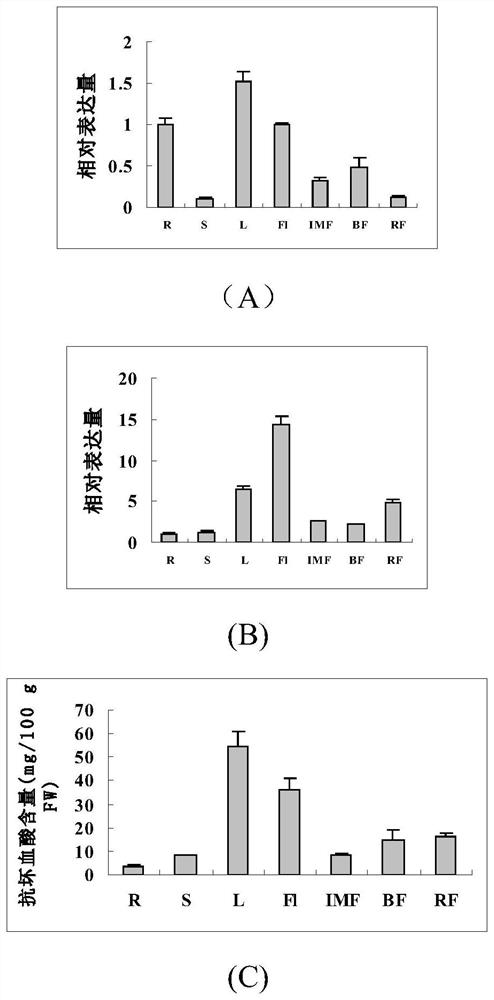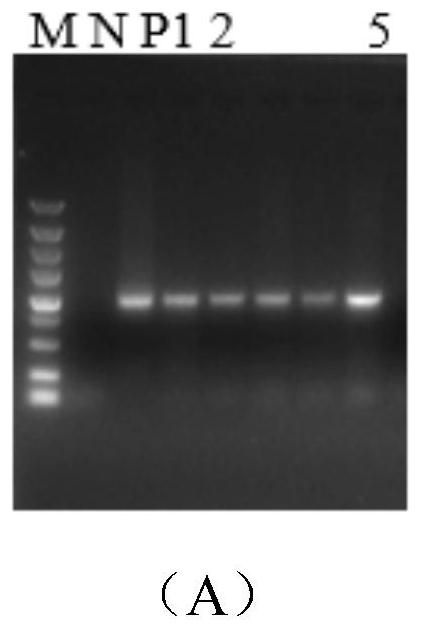Tomato ascorbic acid biosynthetic gene PMI and application thereof
A technology of ascorbic acid and biosynthesis, applied in the field of genetic engineering, can solve the problems of lack of PMIs genetic test evidence and few reports on regulatory mechanisms
- Summary
- Abstract
- Description
- Claims
- Application Information
AI Technical Summary
Problems solved by technology
Method used
Image
Examples
Embodiment
[0083] 1) Plant material:
[0084] The tomato material is (Solanum lycopersicum) conventional line AC (preserved in this laboratory), which is used for gene cloning and genetic transformation. AC was potted in spring. After the fruit set matured, the roots, stems, leaves, flowers and fruit samples of different developmental stages were collected and quick-frozen in liquid nitrogen, and stored in a -70°C ultra-low temperature freezer for analysis of tissue expression patterns of PMIs.
[0085] 2) PMIs tissue expression profile and analysis of ascorbic acid content in each tissue:
[0086] Primer qPCR primers for PMI gene were designed using Primer5 software. A 10 μL reaction system was used, with EF1a as the internal reference (Lovdal and Lillo, 2009), and the Roche fluorescence quantitative PCR instrument LC480 was used for determination and analysis. The system includes Premix Ex Taq TM (2×) 5 μL, 0.5 μL of forward and reverse primers, 4 μL of template. Each sample was r...
PUM
 Login to View More
Login to View More Abstract
Description
Claims
Application Information
 Login to View More
Login to View More - R&D
- Intellectual Property
- Life Sciences
- Materials
- Tech Scout
- Unparalleled Data Quality
- Higher Quality Content
- 60% Fewer Hallucinations
Browse by: Latest US Patents, China's latest patents, Technical Efficacy Thesaurus, Application Domain, Technology Topic, Popular Technical Reports.
© 2025 PatSnap. All rights reserved.Legal|Privacy policy|Modern Slavery Act Transparency Statement|Sitemap|About US| Contact US: help@patsnap.com



